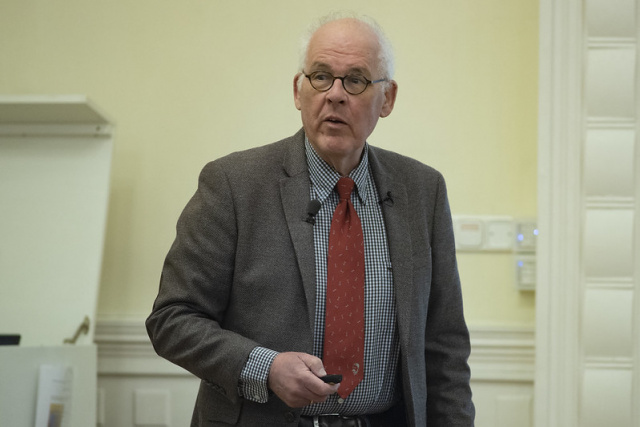Erdős spaces - Inaugural lecture by Honorary Member Jan van Mill
Honorary Member Jan van Mill delivered his inaugural academic lecture on 9. October 2023; a summary of the lecture in English, with a picture gallery and video.
Erdős space E is the “rational” Hilbert space, that is, the set of vectors in l2 whose coordinates are all rational. Here l2 is the familiar Hilbert space of all sequences x = (x1, x2, x3,…) in R∞ which are square summable. Erdős space was introduced by Hurewicz, who was asked to compute its topological dimension. This problem was solved by Erdős in 1940; he showed that E is one-dimensional by establishing that every non-empty clopen subspace is unbounded. This result, combined with the obvious fact that E is homeomorphic to E x E, gives the space its importance in topological dimension theory. Complete Erdős space is the “irrational” Hilbert space, that is, the set of vectors in l2 whose coordinates are all irrational.
This space, from 1940, surfaced later in topological dynamics as the “endpoint set” of several interesting objects. The author, in collaboration with Dijkstra, obtained several increasingly powerful topological characterisations of Erdős spaces. As an application, it follows that if M is a, at a minimum, two-dimensional manifold (with or without boundary) and D is a countable dense subset of M, then the group of homeomorphisms of M that fix D set-wise is homeomorphic to E. Homeomorphism groups are given the compact-open topology. Erdős spaces started out as curious examples in topological dimension theory. However, they turned out to be fundamental objects that surface in many places.
Jan van Mill was born in 1951 in Hardinxveld, the Netherlands. He received his PhD in 1977 from the Free University of Amsterdam (Vrije Universiteit Amsterdam), where he taught and researched until his retirement in 2012 and was appointed professor in 1984. From 2004 to 2006, he was President of the Royal Dutch Mathematical Society (Koninklijk Wiskundig Genootschap). In 2012, he was awarded the highest Dutch civilian honour. He has also made outstanding contributions to the fields of geometry and set theory in topology. He is a world leading authority on the homogeneity properties of topological spaces. Since 1980 he has been closely associated with the Hungarian school of set-theoretic topology, which is associated with András Hajnal and István Juhász.

